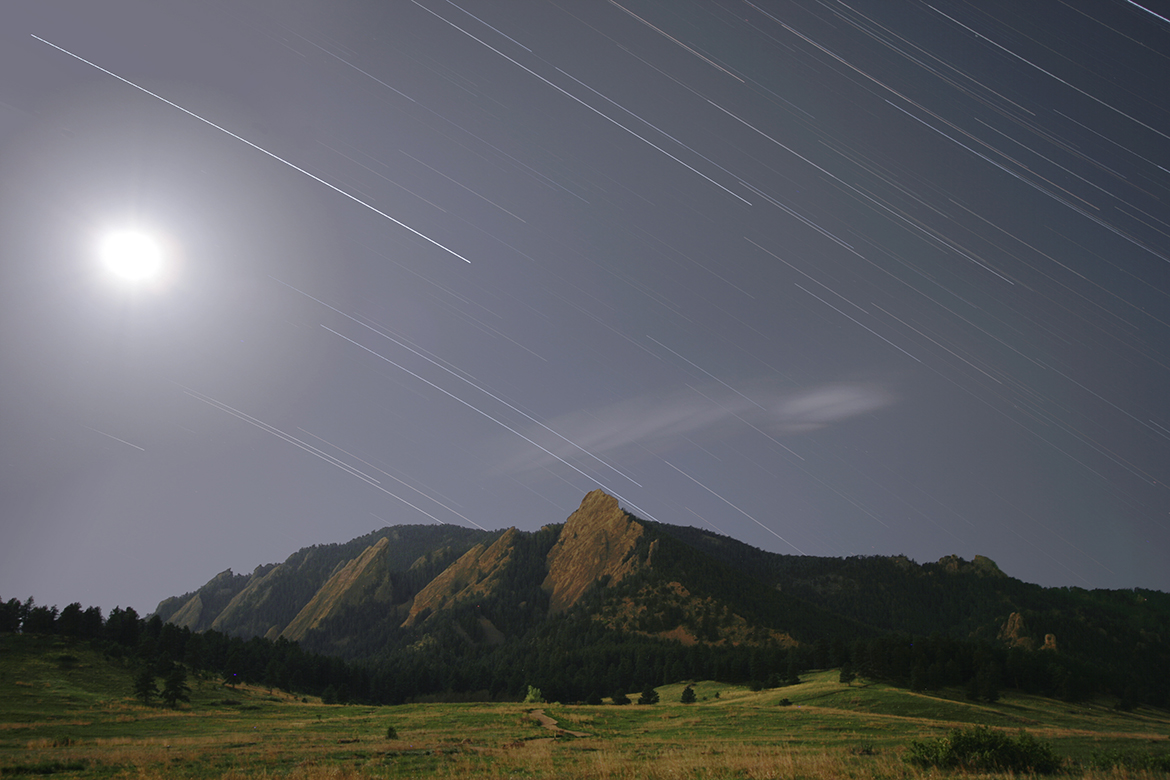
This is an early experiment in taking star trail photos with a digital camera. Ninety exposures of 1-minute each were composited with the “lighten” blending mode in Photoshop. During this elapsed time, the moon entered the frame. It has been dodged out except for its position in the final exposure.
I had traveled to Boulder Colorado frequently, where this section of the Rocky Mountain’s front range offers protection and beauty to the CU campus. In all of my prior trips, the days were sunny and clear, but when the sun set, the mountains pulled a blanket of clouds over themselves.
Not so on this day, the day I had come to see my son graduate. A few wisps of moisture drifted across the peaks, but the sky stayed open, and the full moon illuminated the slabs of the flatirons with its distinctive diffuse light.
In the high resolution copy of this image, the individual exposures are discerned. Each was actually 55 seconds long, separated from the next by 5 seconds. This is too long a delay, the gaps between the star trail segments is visible. At lower resolution, the segments merge together to form the classic pattern of stars apparently streaming across the sky.
Boulder Colorado
12 May 2006
EOS 20Da, EF-S 10-22mm at 22mm
55sec, f/5.6, ISO 200
previous | nightscapes index | next
